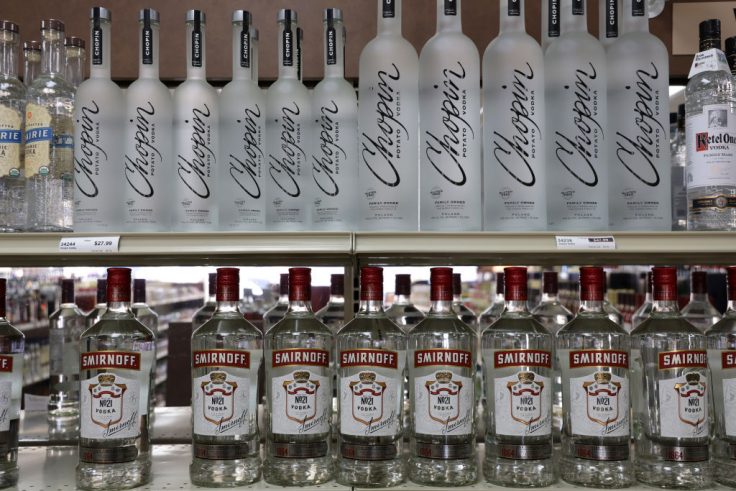As Vladimir Putin launched his "special military operation" against Ukraine, Americans launched their own attacks—against Russian vodka.
"This morning I signed an Executive Order instructing @nhliquor outlets to begin removing Russian-made and Russian-branded spirits from our liquor and wine outlets until further notice," New Hampshire governor Chris Sununu announced on Twitter. Texas governor Greg Abbott asked retailers "to voluntarily remove all Russian products from their shelves" (without mentioning his state is home to the hottest-selling vodka in America, Tito’s). Other states have followed suit.
Bars have also joined the fight. New York’s East Village KGB Bar is no longer selling Russian-made liquor while adding Ukrainian vodkas like Khor and Shevkoff to its menu. The Bond Bar in San Francisco has renamed the Moscow Mule (vodka, ginger beer, lime, and crushed ice in a copper mug) to the Kyiv Mule.
But before you pour out that bottle of Smirnoff or Stoli, keep in mind that neither is made in Russia. The truth is, Americans don’t actually drink a lot of Russian-made vodka.
Smirnoff began selling vodka in the United States in 1934—it’s first distillery was in Bethel, Conn. Still the largest-selling spirit in the country, Smirnoff (owned by beverage conglomerate Diageo) is based out of Plainfield, Ill. There’s video, meanwhile, of bartenders dumping out Stolichnaya in solidarity with the Ukrainian people. It’s true, Stoli was the first Russian-made vodka sold in America (as part of a product swap with Pepsi in 1968), but today’s Stolichnaya comes from Latvia, a loyal member of NATO.
"There is not a lot of Russian-made vodka in the U.S. marketplace," said Lisa Hawkins of the Distilled Spirits Council. "Imports of Russian vodka to the United States are down nearly 79 percent since 2011, and accounted for only 1.3 percent of total vodka imports in 2021."
Americans spent a whopping $7.3 billion on vodka last year—more than on any other spirit. But only $18.5 million of that went to Russian brands such as Imperia, Beluga, Organika, and Russian Standard. When was the last time you bought any of those? Compare this with the $660 million we spent on vodka from France (Grey Goose) and the $291 million spent on Dutch brands (think Ketel One). Sweden (as in Absolut) comes in third, at $177 million. We even drink more Polish vodka than we do Russian.
If you’re looking for good vodkas to replace Russian brands, this country offers plenty. Craft distiller Boyd & Blair offers an award-winning variety that uses Pennsylvania potatoes. Tito’s, of course, comes from Austin, Texas, and holds up both as a mixer and in a martini. It’s also cheaper than Grey Goose (founder Tito Beveridge likens it to "a filet mignon at a pot roast price"). And then there’s the value brand Smirnoff. You might not be inclined to ask for it at a hipster bar but it’s bested top shelf brands in blind taste tests.
Smirnoff is also no stranger to the occasionally misguided boycott. In June 1950, at the dawn of the Cold War, New York City bartenders paraded down 5th Avenue to protest the Russian spirit. As the Daily News reported at the time, the bartenders carried a banner that read, "Down with the Moscow Mule—We Don’t Need Smirnoff Vodka." As Smirnoff’s owner John Martin later told the Hartford Times, "It was great. All the people who saw the sign were rushing into the bars to try the drink."
So let’s raise a toast to the people of Ukraine. And for God’s sake, do not smash that bottle of Smirnoff or Stoli. At least not until it’s empty.
